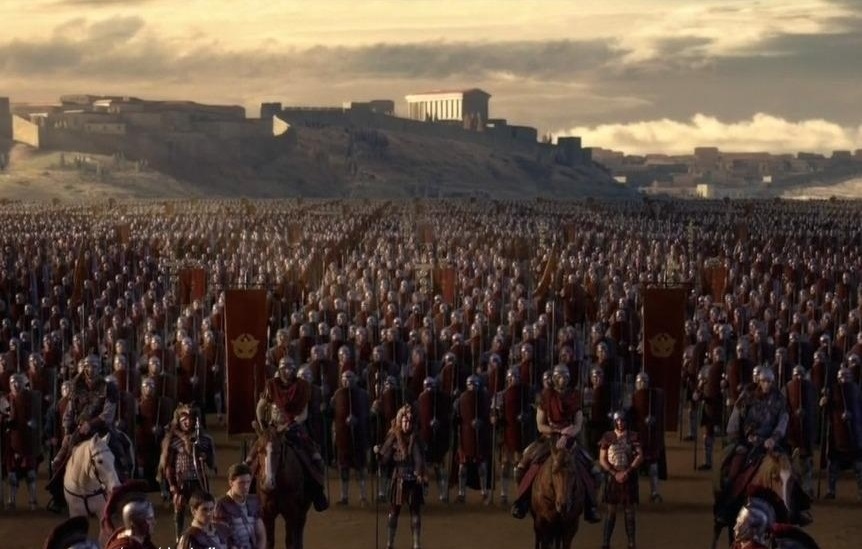Frankish Cults
The religion of the Franks has shifted over the centuries but has largely been focused on ancestor worship, druidic practices, and above all post-mortum cults of personality; most notably the Cult of Pepin Magnus, the Cult of Martel, the Cult of Clovis, and the Cult of Charlemagne. These cults focus around the dietification of a historic person of great significance to the Franks.
History of the Major Cults
When the Franks first crossed into Roman lands during the migration period they were largely naturists and druidic in their worship and religious practices. However, the legendary, some would say mythic, man known as Pepin Magnus is said to have led the Franks across the Rhine and in Francia and settle their new capital. While the date of this event and the actual records to man himself are dubious at best a sect within Frankish society saw this as their chance to emulate the Romans and create a solid pantheon of their own. They’d start with Pepin Magnus as their Jupiter and expand from there. However, the worship and reverence towards Pepin Magnus grew to a point of overshadowing any other deities that may have been in place. Nature worship continued and in many cases was viewed as co-habitable with the Cult of Pepin. Clovis the Negotiator, who was the first Frankish King to attempt to unite their peoples received a similar treatment upon his death. Although he failed in his efforts to unite the Franks into a unified and powerful people many groups viewed him as being on par with Pepin Magnus. Groups of Franks split from the Cult of Pepin and created a similar cult around Clovis the Negotiator (simply Clovis to them or Clovis Magnus). For the most part this new cult existed in perfect harmony with the existing Cult of Pepin. Many sects viewed the two cults as one in the same or at a minimal not in conflict. A few groups did see a conflict and several minor conflicts erupted between the Franks over the validity of each cult. While these conflicts were largely inconclusive both cults would continue to exist, although the Cult of Clovis was far less popular. The next major cult to enter the scene was the cult surrounding Charles Martel, called by many names: the Cult of Martel, the Cult of the Hammer, Hammerites, Martelites, and so on. This was the first Frankish cult to spread outside the Frankish lands and become popular among neighboring groups. It’s growth was expediated because, unlike the other cults at the time, it was formed while Martel was still alive. It was created after a reputable and well liked monk of the Cult of Pepin Magnus claimed to have seen a vision of Pepin speaking with Martel and giving him a crown of light and stars, deifying him. The story shifted eventually to Martel having the dream and popular monks and priests supporting his vision. Nevertheless his success on the battlefield inspired many to believe that he was a living deity and his cult soared to being the most popular in Francia. His defeat at the hands of the Romans in the Rhone valley did little to affect his popularity amongst the people of Francia in general, though it did dip amongst fellow Franks. It was viewed less as him being a non-deity, and more of the Roman gods giving them the upper hand in a literal battle between gods. The defeat has been justified in numerous ways of the centuries but in general is now viewed more as a part of the story of Martel and less his failing. His death at Parisiorum was canonized as a heroic last stand to save the Frankish people from the Romans and Martel still does battle with their gods in the afterlife. The final major cult to enter the scene was the Cult of Charlemagne. The effects of Charlemagne’s conquests and reign are immense with even some historians claiming his achievements match that of Julius Caesar and Alexander the Great. Even though his Empire was short lived due to the onset of the Viking age, his legacy permanently altered the region. Part of his legacy was the Cult of Charlemagne. Much like Martel, his cult was started while he was still alive after his victory at Parisiorum catapulted his popularity to astronomical levels. Several major monks, priests, and shamans at the time split from their cults to claim that Charlemagne was Martel reincarnate and in some cases even Pepin Magnus reincarnate. His cult boomed in popularity and was arguably accelerated by Charles doing something his predecessor hadn’t: been humble. Unlike Martel, Charlemagne denied any claims to being a deity or a reincarnation and spent his whole life claiming he was but a regular man. His humility and humbleness in the face of his overwhelming popularity and acclaim likely boosted it even further that by the time of his death the Cult of Charlemagne was far above all the other cults in popularity and active members amongst both Franks and non-Franks. So great was his popularity that there were two additional major religious sects created in his name. The Empire worked hard to suppress these initially, but as it’s power waned these sects would arise again.
Type
Religious, Cult



Comments